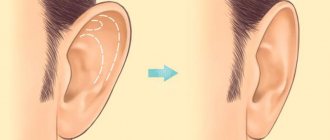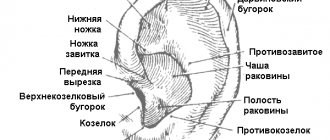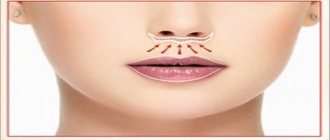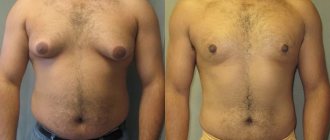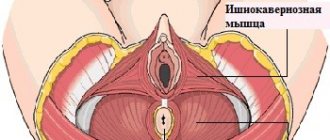The shape of the ears, like most parts of the human body, has its own standards of beauty. These standards are not the same: they change over time and in different countries the attitude towards the shape of the ears is different.
For example, in Japan, owners of protruding ears will never hide them - this is a sign of beauty and sensuality. In Korea, protruding ears are also considered a sign of prosperity and wealth. What can we say about some peoples of Africa, where the ears withstand a huge load in the form of jewelry, pulling back and increasing the size of the lobe five times.
Meanwhile, in our latitudes, a lop-eared person rather brings a smile. It is no coincidence that people here often turn to plastic surgery. Modern aesthetic surgeons have raised the standards of beautiful ears to precise mathematical calculations, describing, for example, what the angle should be between the auricle and the skull, and how the earlobe should be positioned. Yuri Mirzabekyan, a plastic surgeon at the Institute of Plastic Surgery on Tsvetnoy Boulevard, will talk about these and other details, as well as how ear plastic surgery arose and how it is performed .
Types of otoplasty
- aesthetic (when the shape of the ears changes or they are given a more aesthetically correct appearance);
- reconstructive (restoration of a completely or partially absent auricle, both after congenital pathology and after injury);
- decorative otoplasty (a type of body modification, a newfangled trend in which “elven” ears with pointed ends are created).
Regarding decorative otoplasty, most plastic surgeons speak very coolly: from an aesthetic point of view, such an operation is not justified. Nevertheless, this operation has fans, and a number of clinics perform them. Doctors immediately warn those who want to have pointed ears: think about this in a calm mood, because you will get elven ears forever. This is a full-fledged surgical intervention - with anesthesia, a postoperative period, and you will have to take care of the stitches and give up your usual lifestyle for a while. Besides, if you suddenly want to return your ears to their previous shape, it will be impossible.
Reconstructive surgery of the outer ear corrects such defects as the already mentioned anotia - complete or partial absence of the ear due to injury or prenatal causes, various rudiments of the ear. This type of surgery often uses “donor” sites from other parts of the body, such as rib cartilage or cartilage from another ear. In our country, reconstructive operations have become widely developed and widespread. The main reason is that powerful military operations took place in our country, and people returning from the front often had combat injuries that also affected their ears.
There are more than 170 methods by which this deficiency can be corrected, and each doctor chooses a specific one for himself or practices using a complex of elements from different methods. It happens, for example, that the severity of protruding ears differs on the right and left, so the elements of the operation used to correct one ear and the other may also differ.
The traditional method of performing the operation involves the use of a scalpel. There is also laser otoplasty, in which incisions are made with a special laser. This process occurs much faster, and in addition, the likelihood of complications is reduced.
pixabay.com/PublicDomainPictures
Note: plastic surgeons are most often approached by people who want to correct protruding ears - unilateral or bilateral. The cause of protruding ears is underdevelopment of the antihelix of the ear, as well as an increased angle between the ear and head.
Many patients have their own vision of the ideal ear shape. Yuri Mirzabekyan gives an example when a person consulted doctors twice:
“Previously, this patient had bilateral protruding ears, he was operated on and the result of eliminating the protruding ears was quite satisfactory to him. However, he did not like the size of his ears: he had so-called macrotia, large ears. I can’t say that the size of his ears went far beyond aesthetic standards or anthropometric data. But we met the patient halfway - we reduced his ears, and he was satisfied.”
Still from the film “I am Legend” /
Note: the shape and size of the auricles with protruding ears are within normal limits, only the auricles are located not exactly parallel to the temporal region, but more at a right angle. The ideal angle between the auricle and the head is 30 degrees.
Is it possible to correct the shape of the ear without surgery?
The formation of the ear occurs in the fetus already in the first trimester of pregnancy, then around the sixth month the internal folds and relief of the auricle develop. When a child is born, protruding ears are clearly visible, and already during this period it is possible to correct this defect with the help of swaddling and hats, without surgical intervention. If you manage to fix the ears that require changes, they will take the correct shape, because cartilage is quite pliable. Such correction is possible up to six months of age. After this, surgery is no longer possible.
Ear correction methods
Depending on the problems that need to be solved with the help of surgical intervention, there are several types of otoplasty:
- reconstructive;
- aesthetic.
It can be one-sided (on one ear) and, accordingly, two-sided. It is carried out using different methods:
- Using a scalpel. The most affordable. Characterized by a longer recovery process.
- Laser. Fast, painless, does not require long-term rehabilitation. It is characterized by high precision of incisions, without blood loss and the risk of infection and complications.
- Using radio waves. Among the advantages: cuts without blood, rapid healing. Today the method is in the experimental stage.
Are there any beauty standards for perfect ears?
If we talk about aesthetic standards for the fit of the ears to the head, then it is traditionally believed that the distance between the skull and the edge of the ear should be about two centimeters, and the angle between the ear and the temporal part should be about 30 degrees. In this case, the ear should run parallel to the cheek. Of course, these are very approximate anthropometric data, and in practice, perhaps no one can boast of perfect ears. After all, a person is asymmetrical, and you will see noticeable differences even when comparing the left and right sides of the body, the same applies to the ears. As for their shape, the contours of the ear are so unique and individual that they can be compared to the pads of the fingers.
How to prepare for otoplasty and are there any contraindications?
Otoplasty, of course, has contraindications.
“As a rule, these are general surgical contraindications or an allergy to a particular drug. There may be problems with oncology, problems with blood clotting. But this is being corrected, medications are being selected, there shouldn’t be any difficulties with this,” says Yuri Mirzabekyan.
Before the operation, you will need to undergo certain tests: they will depend on what kind of anesthesia the otoplasty will be performed under - general or local. The results of the tests are necessarily reviewed by the therapist, and only after that the date of the operation is set.
How is otoplasty performed? How noticeable are the scars after surgery?
Otoplasty surgery is performed on the back of the ear in 99% of cases. The scar is hidden in a fold and is never visible, unless, of course, you stick out your ear too much.
“The operation itself is performed under local anesthesia, and if the patient is a child, general anesthesia can be performed. As a rule, the pain is minimal, the surgical techniques have been worked out, and the process of ear correction is carried out quickly. If it was local anesthesia, we give the patient the opportunity to look at himself in the mirror to immediately see the result,” the expert said.
In cases of local anesthesia, when the patient sees the process in the mirror, he may ask to “press” the ear or “add” something. Prominent ears are often corrected along with a change in the appearance of the lobes, because they can also be slightly protruding.
The duration of the operation is from half an hour to an hour, and it is tolerated quite easily. The only important condition: before surgery, it is important to take into account individual contraindications. If they exist, then the surgeon should be warned about this.
Possible complications
After ear correction there is a risk of complications. Otoplasty is considered a safe procedure and side effects are extremely rare. One of them is numbness and thrombosis or swelling, sometimes there is a change in skin color.
Common complications also include asymmetry and poor wound healing, especially in people who have not quit smoking 2 weeks before the procedure. The ear is also one of the places where keloid can develop. This is an overgrown scar that feels hard and lumpy to the touch. The causes of keloids are not entirely clear. There are several methods of treating them, of which steroid injections and laser therapy are the most popular. Your doctor will tell you more about this.
After correction, there is also the possibility of a hematoma forming at the incision site, that is, in the back of the ear. In this case, it is necessary to pump out the accumulated blood and re-sew the skin.
The cartilage in the ear can become infected. Antibacterial therapy is carried out, and if it is ineffective, the final solution is surgery. Possible complications also include allergic reactions, cartilage necrosis and even ear recurrence. To avoid complications, it is important to follow all the surgeon’s instructions, quit smoking in advance, and choose a doctor you can trust.
Postoperative regimen after otoplasty
An important condition for quick recovery after otoplasty is a bandage that is applied to the ears immediately after surgery and worn for about two weeks, even after the stitches are removed.
“Despite the fact that the sutures are usually removed on the seventh or tenth day, I personally usually check the patient on the third day: just to see if everything is fine with him,” says Yuri Mirzabekyan.
On the first day, swelling and hematomas can be observed at the operation site. The bandages should not be tight because blood circulation may be impeded. Plus, compression brings pain. The patient is prescribed antibiotic therapy and anti-inflammatory therapy.
“After the stitches are removed, about two weeks later, we ask the patient to wear something like a T-shirt or an elastic bandage only at night. So that in your sleep you don’t accidentally break the adjusted ear when you turn your head. And, naturally, after the operation you need to take care of yourself like a crystal vase. Do not exercise to avoid injury,” our expert continued.
Postoperative period
After surgical correction of the ears, a recovery period begins. To reduce discomfort, the patient takes painkillers. The bandage must be changed every day.
For several days after surgery, the ear canal becomes swollen, bruised, and painful to the touch. In addition to medications, pain and swelling can be reduced with cold compresses. After about 3 days you can wash your hair. Typically, an examination is performed 7 days after the procedure, and sutures are removed 10–14 days later.
Can there be complications after surgery?
Doctors include polychondritis as an unpleasant consequence of otoplasty, which is an inflammation that affects cartilage and connective tissue. Presumably, the nature of this inflammation is autoimmune. Possible wound suppuration and poor healing.
Surgeons must be careful to ensure that there are no bruises at the surgical site because this impairs healing. Much depends on how well the patient takes care of the sutures in the postoperative period. In general, with this intervention, general surgical complications are possible.
As for the aesthetic side of the issue, in practice, correction of the ears is not the simplest process, requiring a special sense of symmetry and the right approach, which, as a rule, only experienced plastic surgeons have.
Indications
Protruding ears are a fairly common cosmetic defect, which is the source of many complexes. According to the International Society of Aesthetic Surgery, the procedure is one of the most common in the field of plastic surgery. Otoplasty is performed after the ear is completely formed.
Indications for ear surgery:
- underdeveloped antihelix;
- excessive development of cartilage tissue;
- protrusion of the lobe;
- the ear is too large;
- pronounced protruding ears;
- birth defects;
- absence of the auricle or its underdevelopment.
Can ears protrude again after otoplasty?
“I always like to say that surgery is a little more accurate than religion. It is impossible to predict 100% that everything will be the way we want. It often happens that nature intervenes in the process and one ear may, over time, protrude a little more than the other. Therefore, it happens that we make a slight correction,” summarizes Yuri Mirzabekyan.
An experienced doctor resorts to slight hypercorrection, with the aim that the ear will “move away” a little during the recovery period, already in the process of otoplasty. In this case, you shouldn’t squeeze too much, because some patients, for example, wear glasses. And a tightly pressed ear does not look very aesthetically pleasing.
To see the final result of the operation, you need to wait until the swelling goes away completely. Therefore, a full photo from the “Otoplasty: before and after” series can be taken only after a few months. Sometimes it may seem to the patient that the ear is not positioned correctly, but in fact the reason for this may be uneven convergence of the swelling. In such cases, surgeons recommend not to panic, because even if correction is necessary, it will be minimal.


